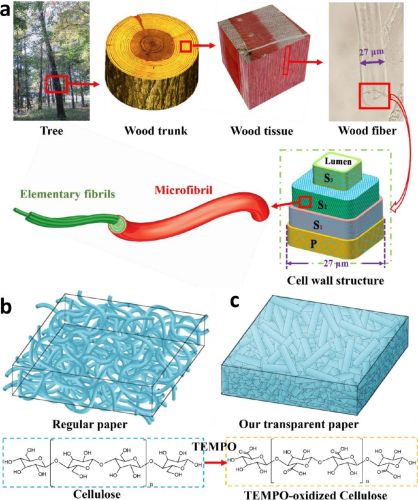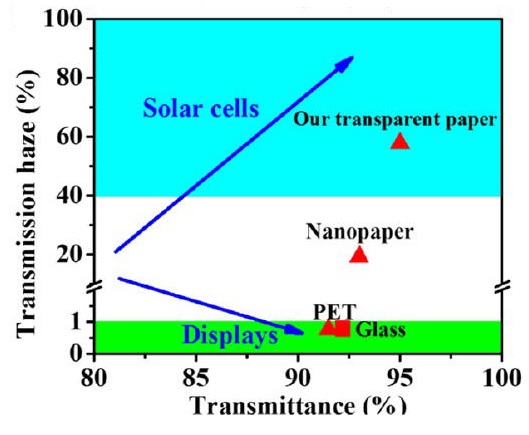Paper coming from wood fibers would now be replacing plastic substrates that are employed in the manufacturing solar cells. Researchers from University of Maryland, the South China University of Technology, and the University of Nebraska-Lincoln have proposed this evolutionary step towards future technology.
As per the researchers, solar cells gives maximum output when the materials involve have high optical transparency and high optical haze. Diffusion of light is of high quality when the optical transparency is high. And high optical haze helps in increasing the scattering of light which further helps in the soaking up of the transmitted light within a material.
Until now, the materials involve in making of the solar cells had high transparency values and very low optical haze values, values corresponding to 90% and less than 20% respectively.
However, the new wood-based material has an extremely high transparency value, somewhere around 96% and equally high optical haze, that is of 60%. Both the values lie on the upper side of the graphs with respect to the transparent substrates.
Structure of the paper is responsible for its better performance in the mentioned field, which is nanoporous in nature unlike the microporous arrangement. Regular paper has microcavities which gives rise to low optical transparency. However, in its evolved form, the researchers using a treatment known as TEMPO have removed these micropores. The mechanism weakens the hydrogen bonds between the microfibers resulting in swollen of fibers and further collapsing into a dense, thick packed arrangement containing nanopores. As per the lead researcher, Liangbing Hu,
The papers are made of ribbon-like materials that can stack well without microsize cavities for high transmittance, but with nanopores for high optical haze.
The new material was tested by coating the paper layer over a silicon slab. The experiment proved that the efficiency of the device in terms of capturing the light increased by 10%, which is quite outstanding. With such kind of tremendous result, the researchers envision that this new evolved high haze paper might offer an inexpensive and efficient way of enhancing the role of solar panels, solar roofs and solar windows.





